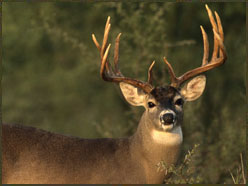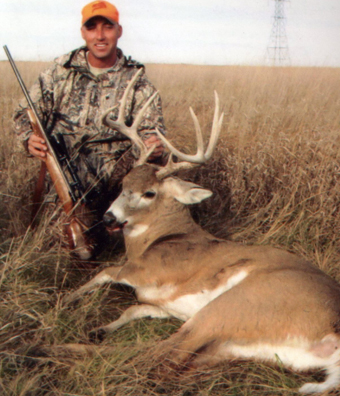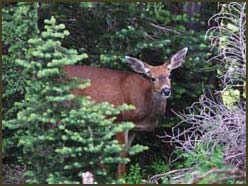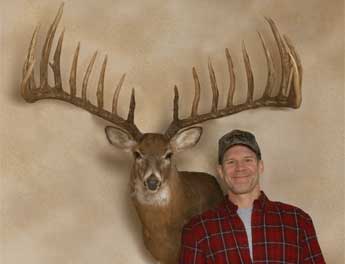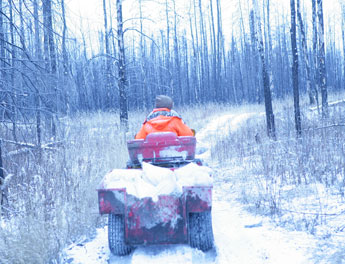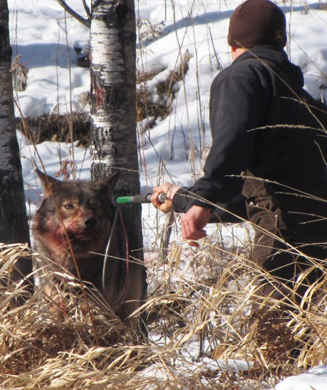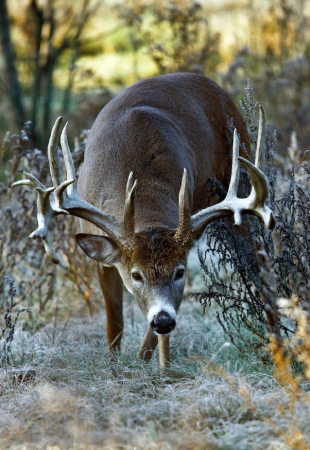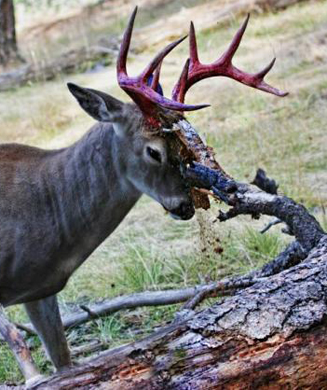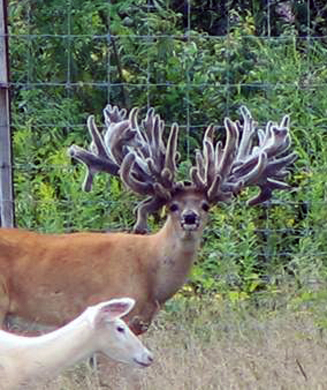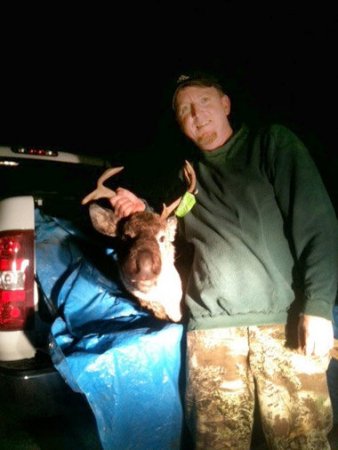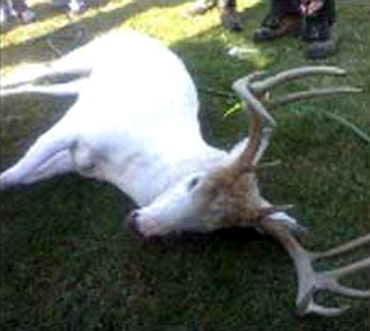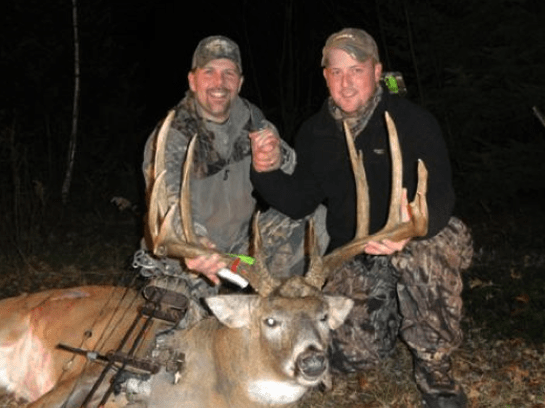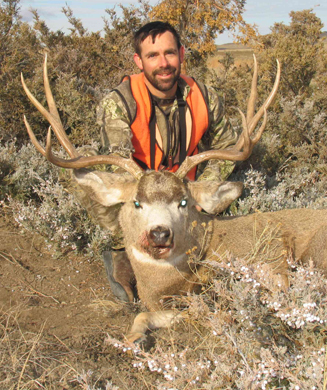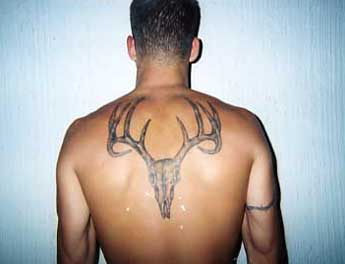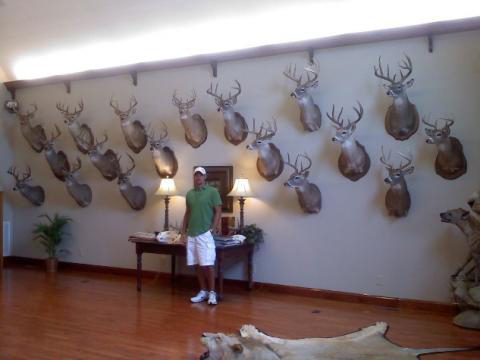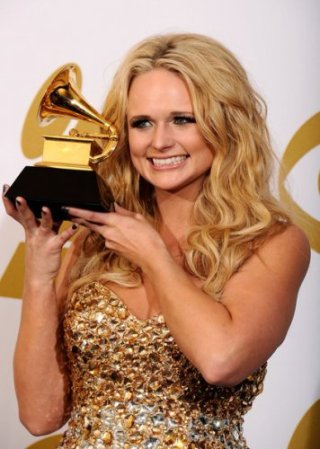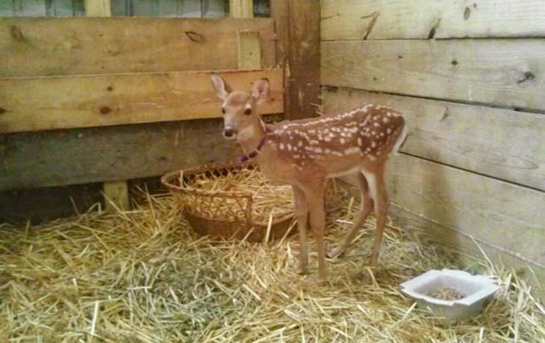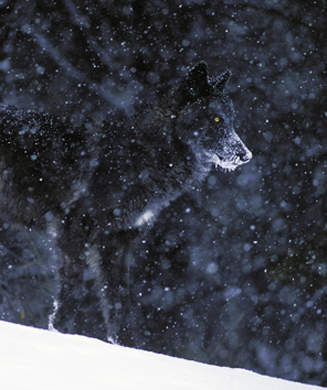About a dozen years ago, a community of Wisconsin deer hunters decided to manage their lands for trophy bucks. Together they owned hundreds of overlapping acres some 20 miles west of Madison in Town of Vermont, a rugged area of steep hills and high bluffs interspersed with deep ravines. The deer were plentiful. Now, the trick was to grow bigger bucks with large antlers.
Many of the hunters were related, all were friends and they practiced quality deer management (QDM) religiously. They passed on young bucks to let them grow and harvested does. Dairy and grain farmers by trade, they used their agricultural know-how to plant food plots and feed deer protein and mineral supplements. They had help, too, as other people in the area fed deer, and the many agricultural fields also provided abundant forage.
And it worked, judging by the many record-book entries from this county. Between 1991 and 2000, Dane County, Wis., produced the third highest combined number of Boone and Crockett and Pope and Young trophy bucks in the country. That’s even more amazing considering Dane County is heavily urbanized, dominated as it is by Madison, the state capital, and dozens of outlying bedroom communities.
Then in February 2002, the Wisconsin Department of Natural Resources (DNR) announced that chronic wasting disease (CWD) had been discovered in Town of Vermont in three hunter-killed deer from the November 2001 gun season. The deer were taken smack in the middle of these lands being managed for trophy bucks. A later sampling of 500 deer found another 15 with CWD, and in fact 11 of the 18 CWD deer were clustered right on or around these QDM lands.
The discovery of the always-fatal CWD in the heart of American deer-hunting country came as a shock. This was the first known instance of the deadly and highly contagious brain disease east of the Mississippi-hundreds of miles from the western regions of the country typically associated with CWD. One question on everyone’s mind was, how did it get here?
There is still very little known about how chronic wasting disease is transmitted, but one possible scenario (as yet unproven), and a terrible irony, is that these dedicated hunters may have inadvertently introduced the disease into Wisconsin’s deer herd through contaminated feed used during their quest to grow trophy bucks. The concern is that some of the feed may have contained protein and bonemeal from rendered animals infected with CWD-like diseases that got passed on to the deer. Consider the following:
- CWD belongs to the family of diseases know as transmissible spongiform encephalopathies (TSE). Mad cow disease is the best-known TSE, and it’s believed that England’s cattle developed mad cow from feed containing rendered animal by-products. Specifically, the feed used protein and bonemeal from sheep, and English sheep have a 250-year history of scrapie, another TSE.
- Research shows that TSEs can jump from one species to another. So after English cows ate feed containing scrapie-rendered sheep the cattle eventually contracted mad cow disease in the mid-1980s. The disease spread even faster once mad-cow-infected cattle were rendered into protein and bonemeal that was then fed to other cows.
- During the late 1980s Wisconsin deer from the CWD area were very likely fed protein and bonemeal from rendered animals, including other ruminants, according to Mike Irwin, an area farmer, deer hunter and journalist who has been researching Wisconsin’s CWD outbreak.
“The local co-ops were pushing [BRACKET “animal”] by-product rations,” says Irwin, who did not participate in this feeding program himself. “The hook was that soybeans were very expensive at the time. But these other forms of rendered protein, calcium and phosphorus, but especially the protein, were pretty cheap.”
“Meat and bonemeal was being used in cattle feed” prior to 1997, confiirms Eric Nelson of Wisconsin’s Department of Agriculture, Trade and Consumer Protection. “And it would have been from multiple sources” that included ruminants.
The Food and Drug Administration (FDA) considers the feeding of animal by-products to be very capable of spreading TSE diseases, which is why in 1997 the FDA passed regulations essentially prohibiting the feeding of by-products from rendered ruminants such as cattle, sheep and deer back to these same animals. Feed containing rendered ruminants is supposed to carry a warning label that says not to feed it to other ruminants.
Wisconsin’s Plan to Combat CWD
Wisconsin DNR officials like Tom Hauge, chief of wildlife management, don’t think that the feeding-infection scenario is very credible. However, the problem with feeding, Hauge says, is that it artificially concentrates deer, making it that much easier for any disease to spread among them.
Aerial reconnaissance of this area in March revealed numerous feed stations and deer trails leading to them. In the wake of chronic wasting disease being discovered, the DNR asked for a statewide ban on all deer feeding and baiting, which was passed last June.
No one is sure how widespread CWD is within Wisconsin. Large-scale testing won’t begin until this fall, when the DNR hopes to test tens of thousands of deer statewide. However CWD got to Wisconsin, the DNR now has to deal with it, and the plan is to wipe out all 25,000 deer in the 360-square-mile area centered around Town of Vermont.
“Honestly, we don’t know if we can get to zero,” Hauge admits, given the number of deer, the large geographic range and the terrain. “What we do know is that we need a significant reduction to slow the spread.”
The DNR has been given far-reaching powers to accomplish this, including the ability to shoot deer from roads and even from helicopters. Landowners whose property is in the “Eradication Zone” receive essentially unlimited hunting permits and can allow anyone to hunt their land.
Not that everyone’s so keen on the plan. The DNR started distributing tags in early June for hunts to be held during the summer. “I’ve talked to a lot of farmers who’ve been given their twenty tags, and they can’t get anyone to come out and shoot deer,” says Ed Moen of Mt. Horeb, who is a deer hunter in the area. Moen says a lot of area people think the DNR decided on eradication too hastily.
“In my experience, about two thirds of the people in the area are leery of the DNR’s plan,” says Mark Kessenich, a deer hunter who owns a farm just south of the QDM lands. Kessenich says he’ll take a deer or two this year, but he wants no part in what the DNR says will be a continuous hunt from October until the deer are completely wiped out.
The DNR’s management plan might be the biggest irony of all. To save Wisconsin’s estimated 1.6 million deer herd, hunters might have to destroy a substantial part of it. Of course, that’s assuming that hunters have the stomach for the task.
